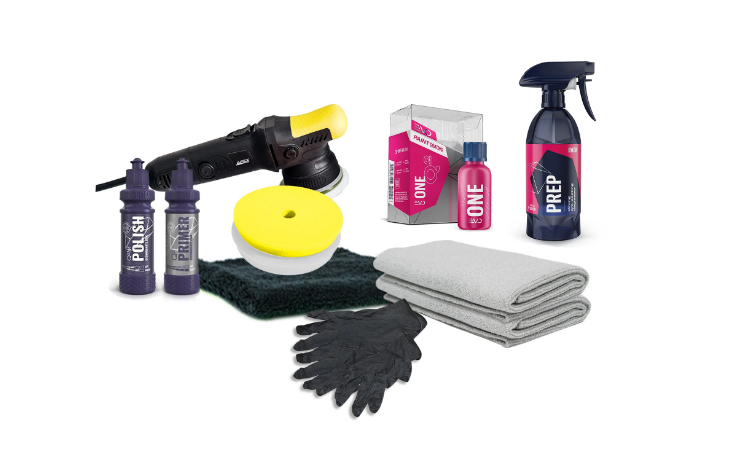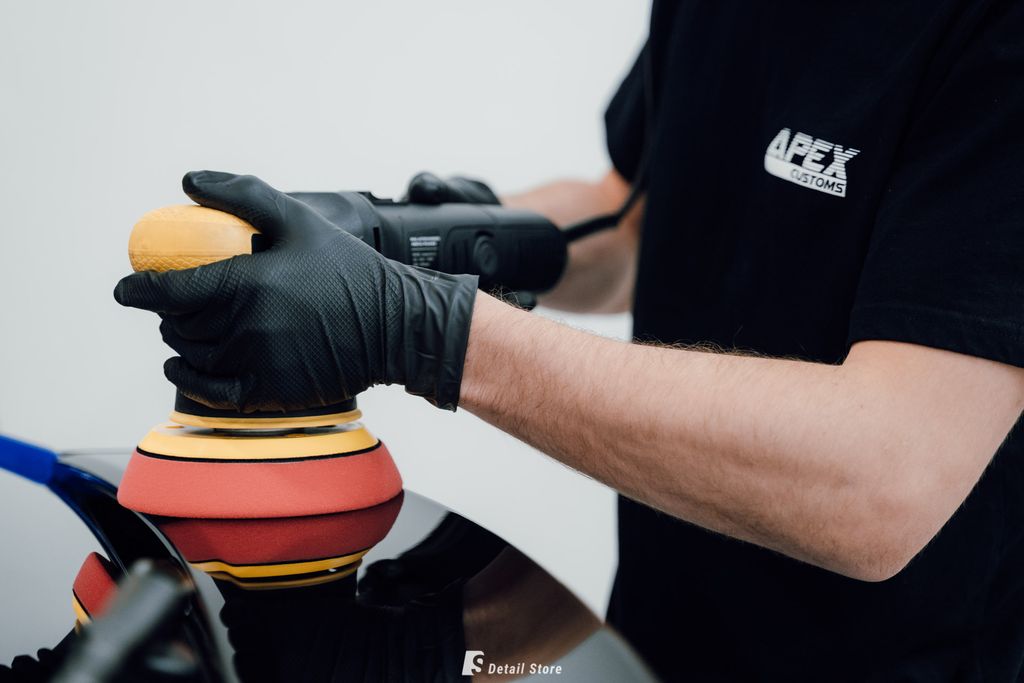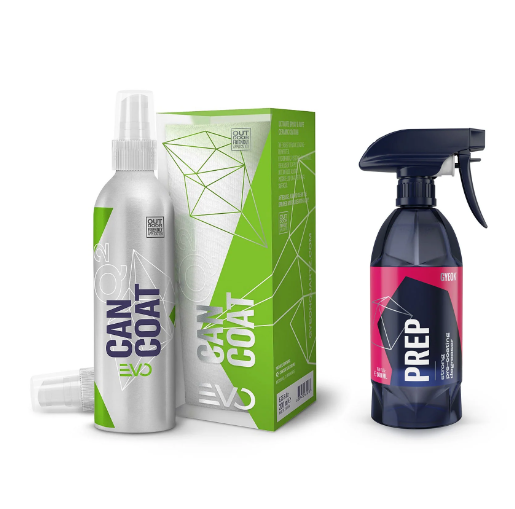Just got a used car and thinking of ways to restore its shine and protect it from damage? Ceramic coating might just be the solution you’re looking for.
Unlike wax or sealants, ceramic coatings provide an unmatched depth and shine while offering long-term protection.
From UV resistance to scratch-resistant surfaces, ceramic coatings are becoming increasingly popular among car owners.
If you’re new to ceramic coatings and wondering why it’s worth considering for your used car, read on to find out more.
What is Ceramic Coating?
Ceramic coating is a liquid polymer that bonds with the surface of your car, creating a protective layer that repels water, dirt, and other contaminants.
The coating is made of nano-sized particles that fill in any microscopic pores on your car’s surface, creating a smooth and hydrophobic layer.
The result? A deep gloss shine that lasts for years and makes your car easier to clean.
Why Use Ceramic Coating for Used Cars?
Whether you just bought a used car or want to give your old one a new lease on life, ceramic coating offers a range of benefits that make it worth considering:
- Long-lasting protection: Ceramic coatings can last up to 5 years with proper maintenance, making it a cost-effective solution compared to regular waxing and sealants.
- UV resistance: The sun’s UV rays can cause significant damage to your car’s paint over time. Ceramic coating provides UV resistance, protecting your car’s paint and keeping it looking new for longer.
- Scratch resistance: While no coating can make your car completely scratch-proof, ceramic coatings are more resistant to scratches from regular wear and tear compared to wax or sealants.
- Chemical resistance: Ceramic coatings form a strong chemical bond with the surface of your car, making it resistant to harsh chemicals and contaminants. This protection is especially beneficial for used cars that may have been exposed to different environmental conditions.
- Easy maintenance: Ceramic coatings create a smooth surface that makes it easier to remove dirt, grime, and other contaminants from your car. This means less time spent on washing and detailing your car.
How to Apply Ceramic Coating
A successful ceramic coating project hinges on preparation. Before the application, the car must be completely free of blemishes, contaminants, and imperfections. The key is to ensure a clean, smooth foundation for the coating to adhere to.
The Essential Steps to Prep Your Car for Ceramic Coating

Deep Clean & Wash
Start with a thorough wash to rid your car of dirt, grime, and debris. Follow this with a clay bar treatment to eliminate ingrained particles. The next step, a detailer’s trick known as an “iron remover,” will detect and eliminate ferrous metal particles often found in brake dust.
Assessing Your Car’s Condition
Before the cleaning, assess the paint’s condition to determine whether any imperfections need to be addressed. Deep scratches or swirl marks will require polishing.
Evaluating Paint Health: When to Polish Before Coating
Polishing is necessary when the car’s paint job has noticeable defects. A comprehensive examination in proper lighting will reveal areas that need attention.
Scratch and Swirl Removal
Use an appropriate polish to remove scratches and swirls. This step may be labour-intensive, but it is non-negotiable for a pristine final result.
Choosing the Right Ceramic Coating: Not All Are Created Equal
The market is flooded with ceramic coating options, varying in traits, application methods, and durability. It’s vital to select a coating designed for car exteriors that caters to your specific needs.
Types of Ceramic Coatings: What Suits Your Car
Coatings range from entry-level to professional-grade, with higher grades offering longer protection and often requiring specific skill sets for application. Understanding the differences will ensure a coating that aligns with your expectations.
Category | Entry Level | Professional Grade |
Ease of Application | • Easy to apply | • Requires more precise application techniques. |
Durability | • Generally less durable than professional grade. | • More durable |
Forgiveness | • High spots are easier to remove. | • Less forgiving |
Recommended Products |
Professional Application vs. DIY Kits: Making the Informed Decision

The DIY route may be cost-effective, but professional application brings expertise and warranty. On the flip side, DIY kits are becoming more user-friendly and can deliver impressive results when carefully applied.
If you’re hoping to give it a go, here’s a checklist of what you’ll need:
- A ceramic coating kit
- Protective gear such as gloves and a mask
- Microfibre towels
- Applicator pads or cloths
The Application Process: A Detailed Walkthrough
Applying ceramic coating is meticulous work that demands cleanliness, patience, and a controlled environment. This stage is not to be rushed, as any oversight could compromise the outcome.
Step-by-Step Guide to Applying Ceramic Coating
Inspection and Masking
After the final wash, inspect the vehicle under bright, direct light to ensure no contaminants are present. Then, mask off any areas not intended for the coating, such as rubber trim and plastics.
To do this, simply apply painter’s tape over the desired areas, being careful to avoid any overlap onto the car’s paint.

Application of Ceramic Coating
Pro tip: When applying ceramic coating, we cannot emphasise enough how important it is to work in a well lit area or with an inspection light. This will help prevent any missed or improperly coated areas. Remember, as the ceramic coating is transparent, it can be difficult to see if the area is not well lit.
Using an applicator pad or cloth, apply a small amount of coating to the surface and work it in using circular motions.
Work in sections, ensuring even coverage and avoiding drying up before wiping off excess with a microfibre towel.
Avoid using too much product, which can lead to curing issues.
Curing Time and Environment: Patience for Perfection
The curing time for ceramic coatings can vary, but most products need at least 24 hours in optimal curing conditions, which include a temperature range and humidity level specified by the manufacturer.
It is best to keep the car in a controlled environment, such as a garage, during this time to avoid any exposure to dust or debris.
Maintaining Your Ceramic Coated Car

Proper maintenance is key to ensuring your ceramic coated car stays in top condition for its expected lifespan. Here are some tips for maintaining your ceramic coating:
- Wash regularly with pH-neutral soap and water (we recommend the 2 bucket method)
- Avoid harsh chemicals and abrasive tools
- Use a ceramic coating booster every 6 months to maintain the coating’s effectiveness
- Schedule regular maintenance checks with a professional detailer for touch-ups or reapplication as needed.
Ceramic coatings are an excellent investment for car owners looking to protect their vehicle’s paint and save time on maintenance. With proper preparation, application, and maintenance, ceramic coating can provide lasting and robust protection for years to come.
Long-Term Benefits: Why It’s Worth the Investment

The upfront investment in ceramic coating yields a multitude of benefits that span the durability and aesthetics of your vehicle. The potential savings in upkeep and detailing costs, coupled with the peace of mind from enhanced protection, make ceramic coating a compelling proposition for used car owners.
From UV Protection to Chemical Resistance: The Advantages Unfolded
Ceramic coatings provide an extra layer of defence against sun damage, oxidation, and chemical exposure, all of which can take a toll on a car’s exterior over time. Ceramic coating ensures your car stays looking its best for longer, saving you time and money on repairs and detailing.
How Ceramic Coating Breathes New Life into Used Cars
What’s more, by concealing minor imperfections in the paint and delivering a glossy finish, ceramic coating can transform the appearance of a used car, giving it a refreshed, rejuvenated look.
Conclusion: A New Chapter for Your Used Car
For used car buyers looking to make their new-old vehicle shine like a brand new car, ceramic coating your car requires diligence, but the payoff is undeniable.
This technology promises a lasting shine that is more than skin deep, offering an extra layer of protection that can extend the life and value of your vehicle.
So what are you waiting for?
Give DIY ceramic coating a try and see the difference it can make for your used car. You won’t regret the investment in long-lasting protection and a beautiful shine.
Frequently Asked Questions (FAQs)
The longevity of a ceramic coating varies depending on the grade and maintenance. Higher-tier products can last up to five years with proper care.
Waxing is unnecessary and redundant after a ceramic coating application. It won’t harm the coating, but it won’t provide any additional benefits either.
Eventually, yes. While highly durable, ceramic coatings are not permanent solutions and will wear off. The need for reapplication depends on the product and wear and tear on your vehicle. On average, reapplication is recommended every 1-2 years.
Yes, with the right products and knowledge, it is possible to DIY a ceramic coating application.
Ceramic coating is a liquid product applied to the exterior of a car, while paint protection film is a physical layer that adheres onto the painted surface. Both provide protection against external elements but have different application processes and benefits.
Ceramic Coating vs. Paint Protection Film
Feature | Ceramic Coating | Paint Protective Film (PPF) |
Durability | 2-5 years, varying by care and conditions. | 5-10 years, with higher resistance to physical damage. |
Cost | Generally less expensive, varies by product and application.
| More expensive, influenced by quality and installation.
|
Benefits | Enhances gloss, UV protection, chemical resistance, easier cleaning. | Superior protection against chips, scratches; self-healing properties; preserves paint. |
Ideal For | Car enthusiasts interested in aesthetics and routine maintenance. | Owners prioritizing physical protection in harsh conditions or for high-value cars. |
Yes, you can clay bar your ceramic coated vehicle, but it is unnecessary. The ceramic coating creates a protective layer, making it easier to remove dirt and contaminants without the need for clay barring.
It is not recommended to add multiple layers of ceramic coating as the product needs to bond with the vehicle’s surface for optimal results. Adding additional layers may compromise the bonding process and result in an uneven or less durable coating.
Yes, you can take your ceramic coated car through a car wash, but it’s important to choose the right type of car wash. Touchless or hand-washing methods are recommended to avoid any potential damage from abrasive brushes or materials used in automatic car washes.
Ceramic coatings can be removed using abrasive methods or solvents designed for this purpose. Professional help is advisable to ensure the removal is thorough and does not damage the paint.
Certain automatic car washes with soft-touch brushes may be suitable for ceramic coated cars. However, hand washing or touchless car washes are always the safer choice to prevent any potential damage to the coating.
-

Aaron is a passionate car detailing enthusiast who channels his expertise and love for pristine vehicles into engaging blog content for a leading detail store website. With a keen eye for detail and a wealth of knowledge about the latest products and techniques, Aaron provides invaluable insights and tips to fellow car enthusiasts. His dedication to achieving showroom-quality results and his ability to explain complex processes in an easy-to-understand manner make his blog a go-to resource for anyone looking to elevate their car detailing game.
-

Calvin brings a wealth of experience across multiple engineering disciplines, including chemical, mechanical, and electrical engineering. His in-depth knowledge of filtration systems and hydraulic pumps has positioned him as an expert in the pressure washer product category. With a unique combination of technical expertise and business insight, Calvin excels at solving complex challenges and driving innovation, particularly in the car detailing industry.



